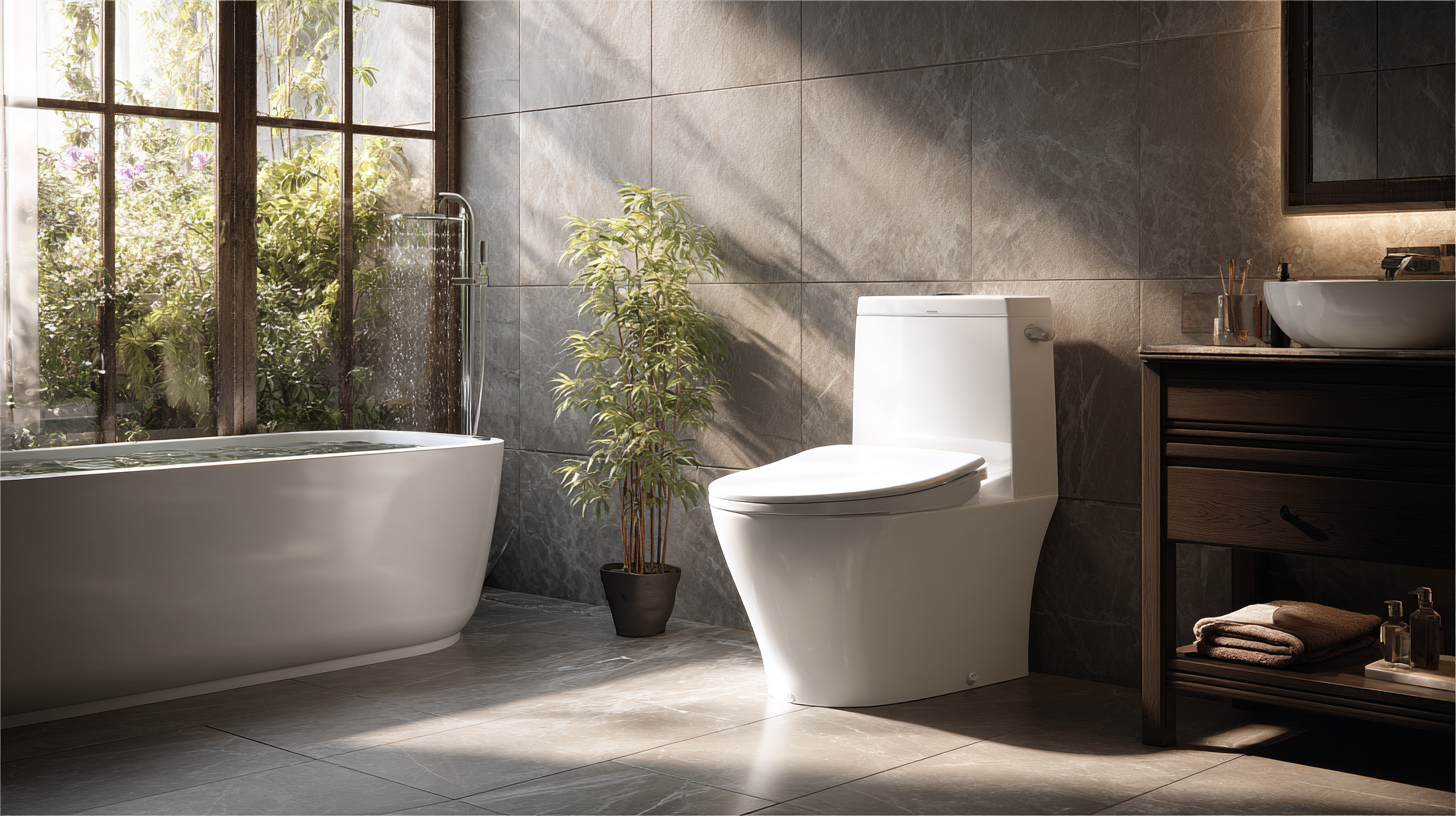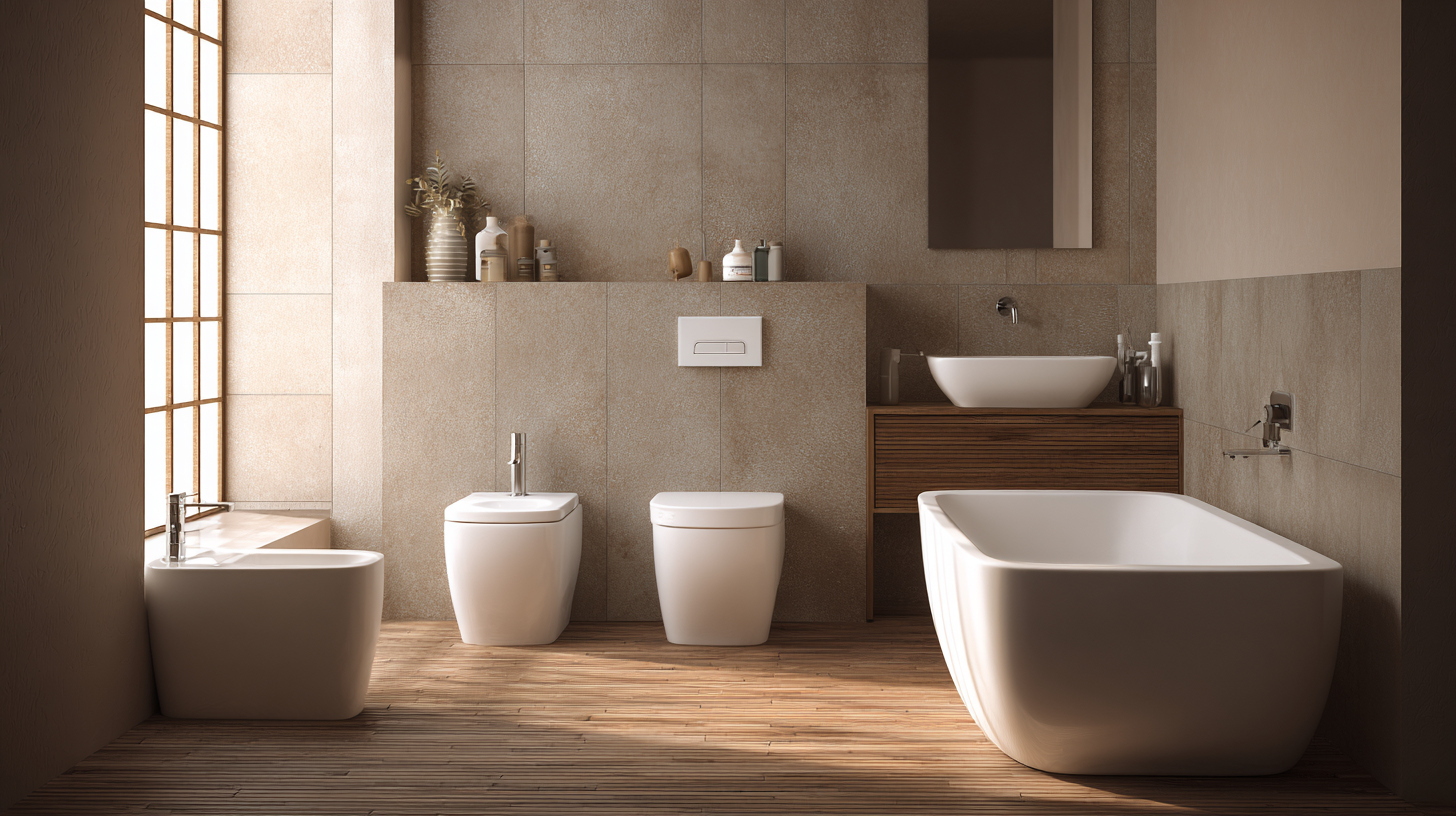Leave Your Message
The global sanitary ware market has seen significant growth, projected to reach approximately $105 billion by 2025, driven by increasing urbanization and rising consumer awareness around hygiene and sanitation. As buyers seek the best sanitary ware solutions, selecting a high-quality manufacturer becomes a crucial decision that can impact both functionality and aesthetic appeal.
 With the industry standard evolving, understanding the key features—such as water efficiency, material quality, and design versatility—can help buyers make informed choices. Moreover, a comparative analysis of manufacturers based on certifications, customer reviews, and sustainability practices will not only ensure compliance with global standards but also enhance overall satisfaction.
This blog will provide nine essential tips to guide global buyers in selecting the best sanitary ware, ensuring both quality and value in their procurement processes.
With the industry standard evolving, understanding the key features—such as water efficiency, material quality, and design versatility—can help buyers make informed choices. Moreover, a comparative analysis of manufacturers based on certifications, customer reviews, and sustainability practices will not only ensure compliance with global standards but also enhance overall satisfaction.
This blog will provide nine essential tips to guide global buyers in selecting the best sanitary ware, ensuring both quality and value in their procurement processes.
When it comes to importing and exporting sanitary ware, understanding key global regulations is crucial for ensuring compliance and quality assurance. Each country may have its specific requirements concerning hygiene standards, material safety, and certification processes. For instance, in the European Union, sanitary products must meet rigorous CE marking requirements, which signify their conformity to health, safety, and environmental protection standards. Familiarizing yourself with these regulations will not only prevent costly delays but also enhance the product's marketability.
Additionally, it's essential to consider cultural factors and local preferences related to sanitary ware. Different regions may have varying expectations for design, functionality, and material. For example, some markets may favor eco-friendly materials and water-saving features due to increasing environmental awareness. Understanding these nuances can help global buyers select products that not only comply with regulations but also resonate with their target consumers, ultimately leading to a successful import-export strategy.
| Key Factors | Description | Global Regulation Example | Compliance Requirement |
|---|---|---|---|
| Material Quality | Ensure the materials meet safety and hygiene standards. | ISO 9001 | Certification required. |
| Durability | Products should withstand regular use and environmental factors. | EN 295-1 | Conform to durability testing. |
| Design and Aesthetics | Ensure appealing designs that align with consumer trends. | CE Marking | Voluntary compliance for aesthetic products. |
| Water Efficiency | Select products with low water usage. | WaterSense | Certification for efficiency. |
| Sustainability | Consider environmentally friendly materials and processes. | LEED Certification | Compliance for new buildings. |
| Local Regulations | Understand local building codes and requirements. | Local Sanitary Codes | Mandatory compliance. |
| Installation Requirements | Verify compatibility with existing plumbing systems. | Installation Guidelines | Must follow local guidelines. |
| Warranty and After-Sales Service | Ensure good customer support and warranty terms. | Consumer Rights Act | Guarantee rights expected. |
| Testing and Certification | Products should be tested for compliance with standards. | ASTM Standards | Formal testing required. |
When selecting sanitary ware, understanding the quality standards and certifications is crucial for ensuring product reliability and safety. Certifications such as CE and ISO play significant roles in assessing quality. The CE mark indicates that the product complies with health, safety, and environmental protection standards set by the European Union. This certification is essential for products being sold in European markets, as it assures buyers that the sanitary ware has undergone rigorous testing and meets strict quality regulations.
ISO certification, on the other hand, represents an international benchmark for quality management systems. It demonstrates a company's commitment to quality and continuous improvement. For sanitary ware manufacturers, achieving ISO certification not only enhances product credibility but also builds trust with global buyers. Additionally, it is important to look for other relevant certifications that may vary across regions, such as ANSI in the United States or AS/NZS in Australia, ensuring that the chosen products meet both local and international standards. By prioritizing these certifications, buyers can confidently select sanitary ware that guarantees durability, safety, and compliance.
When selecting sanitary ware, two critical factors to consider are material durability and safety. According to a report by Grand View Research, the global sanitary ware market is projected to reach $200 billion by 2025, driven partly by rising demand for durable and high-quality materials. For instance, vitreous china remains a favored choice due to its non-porous surface and robust nature, which resists chipping and cracking, ensuring long-term reliability in both residential and commercial settings. Additionally, modern innovations have introduced alternatives like solid surface materials and acrylic, which provide comparable durability while also offering design flexibility.

Safety is paramount in sanitary equipment, particularly in public spaces. Research from the World Health Organization (WHO) indicates that poorly designed or manufactured sanitary products can be a source of health risks, including bacterial contamination. Therefore, selecting materials that are easy to clean and non-toxic is essential. For example, ceramics are not only durable but are also inherently hygienic, preventing the growth of harmful bacteria. Furthermore, certifications such as NSF/ANSI 61 for health effects and ISO 14001 for environmental management can help buyers identify products that prioritize consumer safety while assuring quality and sustainability in sanitary ware manufacturing.
Consumer preferences in sanitary ware selection have evolved significantly, driven by a combination of lifestyle changes and a growing emphasis on sustainability. Recent market trends indicate that buyers are increasingly looking for eco-friendly products that minimize water usage and reduce environmental impact. Materials like porcelain and ceramics, known for their durability and low maintenance, are highly favored. Additionally, the rise of smart technology integration in sanitary ware—such as touchless taps and automatic flushing systems—is becoming a major selling point for consumers seeking convenience and hygiene.
Aesthetic appeal also plays a crucial role in the decision-making process. Modern consumers are leaning towards minimalist designs that offer a clean and sophisticated look, making style just as important as functionality. Colors like matte black, soft pastels, and classic white are trending, as buyers prefer pieces that seamlessly blend with contemporary interior designs. Furthermore, customization options are gaining traction, allowing individuals to express their personal style in bathroom renovations. Understanding these shifting preferences is essential for global buyers aiming to tap into the latest sanitary ware market.
When it comes to selecting sanitary ware, a crucial factor for global buyers is the balance between cost and quality. According to a report by the Global Market Insights, the sanitary ware market was valued at over $60 billion in 2022, with projections indicating substantial growth driven by rising disposable incomes and urbanization. This data underscores the importance of making informed purchasing decisions that consider both cost-effectiveness and long-term durability.
In a cost-benefit analysis, buyers must not only focus on the initial price but also consider the overall value offered by different brands and products. High-quality sanitary ware often entails superior materials and advanced technologies that can lead to significant savings over time. For instance, ceramics that resist stains and scratches can reduce maintenance costs, while water-saving fixtures can lead to lower utility bills. The International Association of Plumbing and Mechanical Officials reports that water-efficient systems can use up to 30% less water, making them a smart investment despite a potentially higher upfront cost. Effective decision-making requires evaluating the total lifecycle costs of products, ensuring that the chosen sanitary ware will provide both quality and value in the long run.

